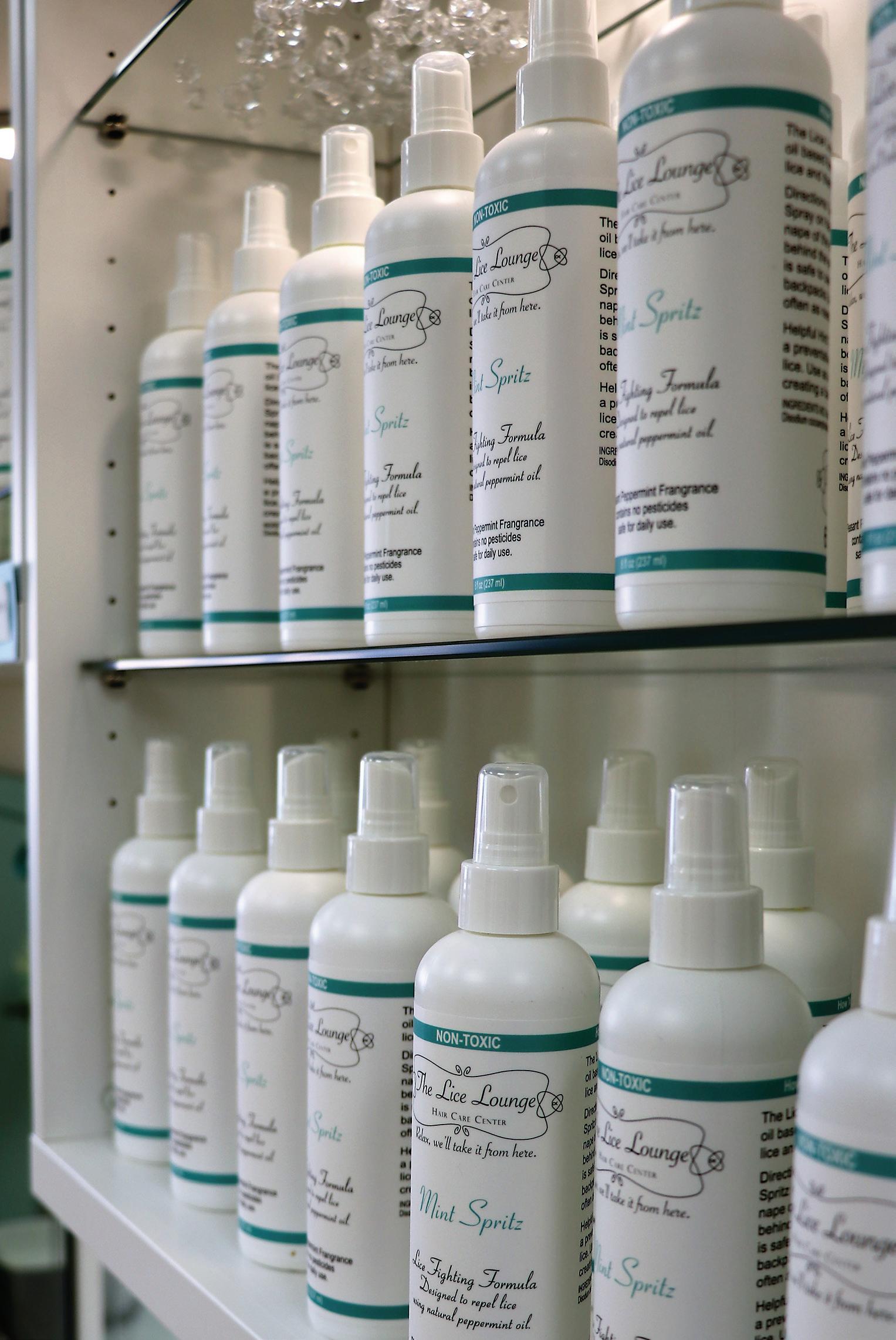
2 minute read
HEAD LICE: What’s fact, what’s fiction?
Duluth business helps families navigate a common problem
STORY AND PHOTOGRAPHY
BY KELSEY ROSETH
Throughout the Twin Ports, there are rumors spreading about head lice.
“Only 50 percent of people get itchy when they have lice … itching is caused by an allergic reaction to the bug’s saliva,” said Jessica Fleming, owner of The Lice Lounge. The business, located at 113 N. 2nd Ave. W. in Duluth, has battled misconceptions about these tiny bugs for the past year.
Fleming is a mother of three who lives in White Bear Lake, Minn., where she opened the first Lice Lounge two years ago. She got the idea for the business after her children experienced lice about 10 times. “I knew what I wanted as a mom,” she said. “And that was someplace nice to go, to be supported, and I wanted a caring community to talk to and commiserate with.”
Before opening her business, Fleming received professional training at The Shepherd Institute in Florida. “I basically went to lice school,” she said. Today, The Lice Lounge provides what Fleming calls “over-the-top” customer care to Twin Ports families. Parents can sip coffee and wine during a 30-minute strand-by-strand head check while children play games or watch videos on an iPad.
When Fleming’s team encounters an individual who is exposed, an all-natural, pesticide-free removal takes place, lasting about two hours. “Permethrin is a neurotoxin,” said Fleming, referring to the common chemical used to treat lice. “It used to be effective, and it just isn’t any longer. The lice have simply become resistant.” Fleming said that in a March 2016 study published in the Journal of Medical Entomology, Minnesota was reported as having one of the highest percentages of resistance.
Treatments at The Lice Lounge cost $80 an hour, include two follow-up head checks and can be paid from a health savings account. For a head check only, new clients pay $30, while returning customers pay $20. The Lice Lounge reserves 10 percent of its proceeds for schools to access if lowincome families need help paying for treatment. In addition to those services, The Lice Lounge travels to school districts to tackle head lice myths, providing updated prevention and treatment information.
The Hard Facts On Head Lice
“[Head lice] need two things at all times. They need to eat, and they need that constant heat of the head,” said Fleming, going on to say 98 percent of all occurrences stem from headto-head contact. Less than 2 percent of cases are spread from sharing brushes and hats.
Having lice has nothing to do with poor hygiene, and the bugs don’t spread disease or pose a health risk. That’s a myth. “Lice comes with an old stigma, which is sometimes hard to get rid of,” said Susan Sederberg, a registered nurse and public health nurse at Duluth Public Schools. “It happens to families that have the cleanest of homes and to those who are struggling to keep their house clean, and across all economic barriers, too.”
Lice become pregnant for life. Females lay eggs twice daily, up to ten nits per day. Nits can range in color from grayish white to reddish brown, and they’re usually about the size of a sesame seed. They hatch in about seven to 10 days. The Lice Lounge states head lice can only feed on one blood type. If lice move to another head with a different blood type, they’ll die after eating.
Check Regularly To Prevent Lice

Both Lice Lounge and Duluth Public Schools recommend weekly head checks to catch lice early. At the very least, “once a week, take a peek,” said Sederberg. Louse eggs are stuck to the hair shaft and will not easily shake free. Dandruff and dry skin can often be misdiagnosed as head lice, yet those move when disturbed.
Since a louse depends on human blood for survival, it can be separated from its host for only about 24 hours before it dies. After 12 hours away from a scalp, a louse has lost the ability to ever eat again.










